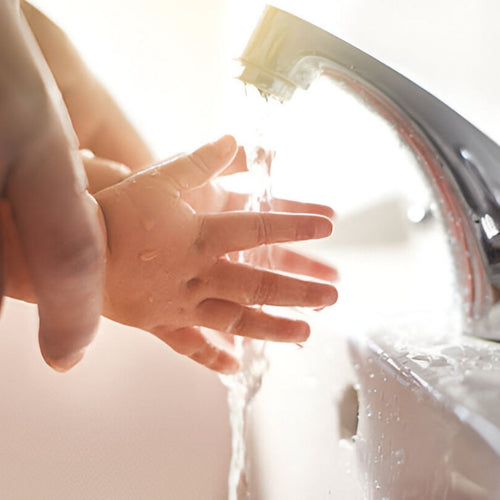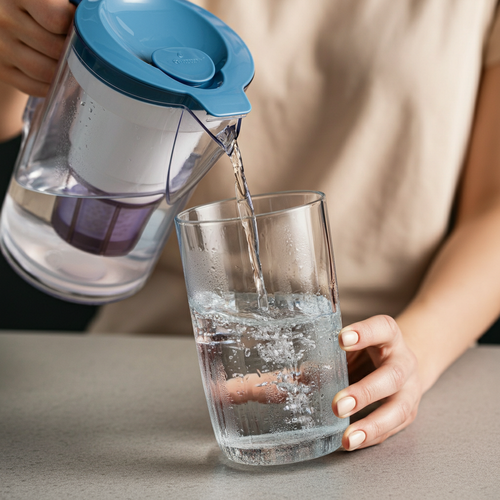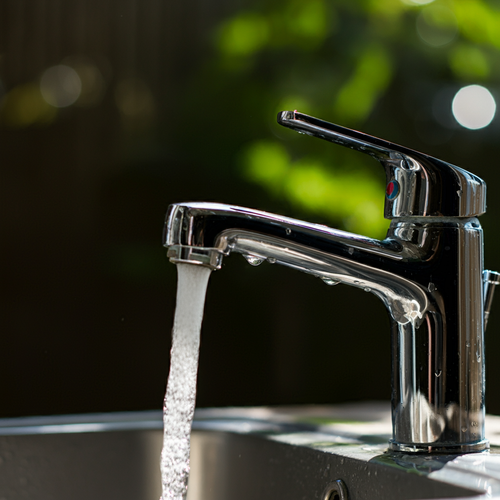Your water softener's brine tank is overflowing because a component that controls the water level has malfunctioned. The most common culprits are a stuck float valve, a clogged drain line, or a faulty injector. While frustrating, this is a fixable problem, and by understanding the basic workings of your water softener, you may be able to troubleshoot the issue yourself.
Water softeners are essential appliances in areas with hard water. They remove excess calcium and magnesium minerals through a process called ion exchange. The brine tank is critical to this process, holding a concentrated salt solution (brine) that regenerates the resin inside the softener. An overflow indicates a disruption in the carefully controlled water flow that keeps your softener operating smoothly.
Let me explain some key components so you can better tackle this problem:
- Float Valve: This valve, located inside the brine tank, acts like the float in your toilet tank, regulating the inflow of water.
- Drain Line: Excess water exits the system through this tube during the regeneration cycle.
- Injector: This part uses water pressure to draw brine from the tank and into the resin bed.
In the following sections, we'll delve into the common reasons for overflow and provide step-by-step troubleshooting instructions.
Common Causes of Water Softener Overflow (Troubleshooting)
Stuck Float Valve
- What it is: The float valve is a safety mechanism that prevents the brine tank from overfilling – think of it like the float in your toilet tank.
- How it works: As the water level rises, the float rises with it. Once the water reaches a specific level, the float triggers a valve to shut off the water inflow.
- Why it fails: Over time, mineral deposits or debris can build up on the float or valve, preventing them from moving freely and causing the water to keep flowing.
-
How to Check:
- Turn off the water supply to your water softener.
- Locate the brine tank lid and carefully remove it.
- You should see a float assembly; observe if it's stuck in place or moves freely with the changing water level.
-
How to Fix:
- Often, cleaning the float assembly is enough.
- If there's visible damage or the problem persists, you may need to replace the float valve.
Clogged Drain Line
- What it is: The drain line carries excess water and dissolved minerals out of your system during the regeneration process.
- How it works: Water pressure pushes the waste out through the drain line, typically to a laundry drain or standpipe.
- Why it fails: Dissolved salt can recrystallize inside the line, along with sediment or even small foreign objects causing blockages. A fully clogged drain line will prevent the brine tank from emptying properly, leading to overflow.
-
How to Check:
- Disconnect the drain line where it attaches to the softener.
- Try running water or blowing air through the hose to see if there's an obstruction.
-
How to Fix:
- Minor clogs can often be cleared with a plumber's snake, strong water pressure, or specialized water softener drain cleaner.
- For severe blockages or if the hose is damaged, you may need to replace it.
Malfunctioning Injector
- What it is: The injector is a crucial component that uses water pressure to create suction, drawing brine from the brine tank and into the system during regeneration.
- How it works: The injector has a small nozzle and venturi that work together to create a vacuum effect, pulling the concentrated salt solution into the softener.
- Why it fails: The injector's tiny openings are prone to clogging by salt crystals, mineral deposits, or debris. A clogged or malfunctioning injector can prevent the correct amount of brine from being drawn, affecting the regeneration process and potentially causing overflow.
- How to check: Properly diagnosing injector problems often requires some disassembly of the softener's control head. This task might be best left to a technician, especially if you're unfamiliar with your softener's specific design.
-
How to fix:
- Sometimes, disassembling the injector and carefully cleaning the nozzle and screen is enough.
- If wear and tear are evident, replacement injector parts or a new assembly may be necessary.
While you can troubleshoot some issues yourself, don't hesitate to seek professional help, especially if you are uncomfortable making repairs or suspect a more complex problem with your water softener.
Other Potential Issues
Salt Bridges
- What it is: A salt bridge is a solid crust of salt that forms at the top of the brine in your brine tank, creating a gap between the salt and the water below.
- Why it's a problem: Even though there's salt in the tank, the system can't create proper brine because the water can't make contact with the salt to dissolve it. This can disrupt the regeneration cycle and lead to overflow issues.
- How to check: Look inside the brine tank (carefully!). If you see a solid crust of salt with a noticeable gap below, you have a salt bridge.
-
How to fix:
- Use a long-handled broom or similar tool to gently break up the salt bridge. Be careful not to damage the tank.
- Add some warm water to help dissolve the salt.
- For future prevention, use high-quality water softener salt and check your tank regularly.
Faulty Timer or Control Valve
- What they are: The timer or control valve is the "brain" of your water softener, initiating and controlling the regeneration cycles.
- Why they fail: While less common than float valve or drain line issues, a faulty timer or control valve can malfunction, leading to incorrect regeneration timing or the system continually adding water to the brine tank.
- How to check: Diagnosing these issues is complex and usually requires a professional technician.
- How to fix: Often, this involves replacing faulty components within the control valve.
Incorrect Regeneration Settings
- What it is: Your water softener's settings determine how often it regenerates and the length of each cycle.
- Why it's a problem: If the system regenerates too frequently, or the water fill part of the cycle is too long, it could contribute to overflow.
- How to check: Consult your water softener's manual to understand the regeneration settings and how to adjust them.
- How to fix: You may need to experiment slightly to find the optimal settings for your water usage and hardness level.
When to Call a Professional
While DIY troubleshooting can often solve water softener overflow issues, there are situations where it's wise to seek professional help from a qualified plumber or water treatment specialist. Consider calling in the experts if:
- You've tried the fixes and the problem persists: If you've carefully worked through the suggested troubleshooting steps and your brine tank still overflows, there may be a more complex issue that requires expert diagnosis.
- You're not confident in your DIY abilities: Water softeners involve both plumbing and electrical components. If you're not comfortable disassembling the system or dealing with wiring, it's safest to call a professional.
- You suspect a major component failure: Problems with the timer, control valve, or internal seals often require specialized parts and knowledge that a technician can provide.
- You want peace of mind: A professional can inspect your entire system, ensuring not only that the overflow issue is resolved but also that your softener is operating efficiently.
Benefits of Professional Help
- Accurate diagnosis: Experienced technicians can quickly pinpoint the root cause of the problem, saving you time and potential frustration.
- Access to specialized parts: Professionals have access to replacement components that may not be readily available to the average homeowner.
- Quality repairs: They possess the training and experience to ensure repairs are done correctly, preventing future leaks or malfunctions.
- Warranty protection: In some cases, attempting repairs yourself could void your water softener's warranty.
Even if you start with DIY fixes, there's no shame in calling for backup! Prioritizing the safety of yourself and your home is paramount.
Preventing Future Overflow Issues
A little routine maintenance can go a long way in keeping your water softener working smoothly and preventing stressful overflow situations. Here's what you can do:
-
Regular Cleaning:
- Clean the float valve assembly as needed to prevent buildup that causes sticking. Follow your manufacturer's recommendations on cleaning frequency.
- About once a year, empty the brine tank completely. Rinse it out and check for signs of salt bridging.
-
Use High-Quality Salt: Opt for pellet or crystal water softener salt specifically designed for water softeners. This helps minimize residue and reduces the risk of clogging.
-
Check for Wear and Tear: During cleaning or whenever you access the brine tank, inspect hoses for cracks or leaks, and check the float and drain line for signs of damage. Catching issues early can prevent bigger problems later.
-
Schedule Professional Maintenance: Some manufacturers recommend a professional tune-up every few years. A technician can give your system a thorough inspection and replace any worn components proactively.
Always refer to your water softener's manual for specific instructions and maintenance schedules.
Keeping Your Water Softener (and Your Floors!) Trouble-Free
Water softener overflows are a sign that something in the system's water level regulation has gone awry. Understanding the crucial role of the brine tank, float valve, drain line, and injector will help you pinpoint the cause. With some troubleshooting, you can often fix common overflow problems and get your water softener back on track.
Key Takeaways
- Don't panic! Overflow issues are typically fixable by checking for stuck valves, clogs, or salt buildup.
- A little maintenance goes a long way. Regular cleaning and using high-quality salt help prevent problems.
- Know your limits. If you're unsure, or suspect more complex issues, call in a qualified technician.
- Proactive care = happy homes. Look for signs of wear and tear during checkups, and consider occasional professional inspection.
Is your water softener still overflowing, or do you have questions about its optimal maintenance?
Contact the experts at SoftPro Water Systems today. We'll help you diagnose the issue, find the right solution, and keep your water (and your floors!) worry-free. Visit our website at www.softprowatersystems.com or call us for a personalized consultation.


















![Aldex Premium 10% Cross Link Resin for Water Softener [High Capacity]-SoftPro® Water Systems](http://www.softprowatersystems.com/cdn/shop/files/Aldex_10_Cross_Link_Resin_Premium_High_Capacity_for_Water_Softener_600x.jpg?v=1735853599)





















